We have roughly 90 acres of apple orchards on the farm today, with over 38 varieties.
 Lodi
Lodi
This thick skinned early apple was developed by the New York State Experiment Station and was introduced in 1924. It is a cross between Montgomery and Yellow Transparent. Lodi are yellow apples with a white flesh that is soft and juicy. This tart and crisp apple makes fabulous apple sauce and is a tremendous cooking apple.
 Zestar
Zestar
Developed at the University of Minnesota and introduced in 1998, Zestar is a cross between State Fair and MN 1691. This large firm apple has a creamy skin with a large deep pink blush and hints of green. Zestar an early season apple that is juicy, sweet and tangy with a unique hint of brown sugar. This all-purpose apple is terrific eaten fresh, baked or sauced, and has a good shelf life.
 BLONDEE
BLONDEE
Blondee was discovered in 2000 among a grove of Gala on an orchard overlooking the Ohio River. This crisp, clear yellow skinned apple – also known as a “yellow Gala” – has great flavor with hints of honey and green banana! Ideal for fresh eating this apple also retains its shape when baked and makes wonderful applesauce. This early season apple stores well and resists browning.
 GALA
GALA
In 1934, orchardist J.H. Kidd, developed the Gala apple in New Zealand and it was released to the commercial market in the 1980s. A cross between Golden Delicious and Kidd’s Orange Red, Gala is also the parent of popular varieties such as Jazz and Pacific Rose. Today Gala is one of the most popular eating apples. The skin of the Gala is thin and yellow-orange with red stripes. The flesh is a creamy pale yellow, crisp and sweet. Gala are wonderful fresh eating apples and make a great addition to salads. When cooking with Gala, their flavor becomes milder. Pair with strong flavored cheese like sharp Cheddar or roasted with winter squash.
 GINGER GOLD
GINGER GOLD
This apple was discovered in The Blue Ridge Mountains growing near a Golden Delicious and was first introduced in 1960. It is a cross between Golden Delicious and Albemarle Pippin. This pale yellow apple is sweet and tangy in flavor with a fine, firm, crisp flesh. Ginger Gold retain their shape when baked and make a flavorful early season apple sauce with hints of spice! Ginger Gold are also great for fresh eating. Good shelf life.
 Ambrosia
Ambrosia
Ambrosia is a chance seedling first found in the early 1990’s on the orchard of Wilfrid Mennell in the Similkameen Valley of British Columbia. It is a cross between Jonagold and Golden Delicious. Ambrosia is a beautiful aromatic early apple. The fruit is medium to large with a creamy yellow background and a beautiful deep pink blush. Ambrosia is sweet, juicy, and low in acid. It is slow to brown making it a great eating or fresh apple. Ambrosia hold their shape when cooked making it a superb cooking apple.
 Honeycrisp
Honeycrisp
Everyone’s favorite apple! The Honeycrisp apple was developed for cold climates in the 1960s by the Minnesota Agricultural Experimental Station and was released in 1991. This apple was actually going to be discarded but as you know has become a VERY popular apple. Honeycrisp is a cross between Keepsake (MN 447 and Northern Spy) and an unknown variety. In 2006 it became the Minnesota state apple. Honeycrisp have a yellow background with red and pink striping and blush. Known as an “effervescent” apple the creamy flesh has a large cell structure making this apple crisp and aromatic. Great for fresh eating, Honeycrisp are also terrific for salads, sandwiches, pies, sauces, desserts and butter.
 McIntosh
McIntosh
The tree was discovered in Ontario Canada by John McIntosh on his farm around 1811. The tree produced good fruit and was known as “Granny’s Apple” by the McIntosh grandchildren. Around 1835, John McIntosh’s son Allen started grafting the tree and by 1900, the apple was gaining popularity in the commercial marketplace. The original McIntosh apple tree was damaged by fire in 1894 and died in 1910. Cuttings from this original tree have been saved and cultivated. The McIntosh apple has over 30 hybrids and is still a popular apple today. This thick skinned apple is a vivid red or deep plum purple over a beautiful bright green base, depending on the hybrid. McIntosh are very juicy and crisp with a brilliant white flesh. When first picked the apple is sweet and tart with hints of spice that mellow out with storage. McIntosh are wonderful eaten fresh and breakdown when cooked making magnificent applesauce. Mix with other apples for a pie if you like a chunky texture.
 Crimson Crisp
Crimson Crisp
This beautiful pure crimson red apple was developed in cooperation between the University of New Jersey, Purdue University, and The University of Illinois in the early 1970s and released in 2005. The flesh is firm, crisp, and very white with a tart and lightly spicy flavor. The apple stores well in the refrigerator lasting for several weeks. CrimsonCrisp is a wonderful eating apple, slow to brown, and would be a great addition to a salad or sandwich. If you are a juice or cider maker this is the apple for you.
 Jonathan
Jonathan
A longtime favorite apple here at Quarry Hill…..There are two theories about the origin of this apple. The first, that it was grown from seeds collected from a Connecticut cider mill by Rachel Negus Higley. She moved to Ohio and planted the seeds in 1804 naming the apple after her husband. The second theory and most common is that this apple is related to the heirloom apple, Epsopus Spitzenberg and was discovered in 1826 in Woodstock New York by Jonathon Hasbrouck, for whom the apple is named. Jonathan have a beautiful deep red blush over a yellow or green skin with cream colored flesh. The crisp flesh has a tart tang with hints of spice. Jonathan breakdown slightly when cooked and are splendid as applesauce, pies, pastry or paired with meat dishes.
 Cortland
Cortland
The Cortland apple is a hybrid cross between Ben Davis x McIntosh developed by the New York State Experimental Station in 1898. This thin skinned apple is sweeter than its parent McIntosh. Cortland have a beautiful red cap with yellow or green skin and bright white flesh. This juicy, crunchy apple is slow to brown making a wonderful eating and salad apple. Use this apple on sandwiches, in soups, quiches and cakes!
 Red Delicious
Red Delicious
The Red Delicious apple is a sport or natural genetic mutation of the older Delicious apple. It was discovered in 1872 in Madison County Iowa by Jesse Hiatt who named the apple Hawkeye. In 1892 Stark Nurseries held a contest to find a new apple to replace the Ben Davis apple. Hiatt submitted his apple and sold the rights to the nursery who renamed it Red Delicious. In the 1980s, Red Delicious counted for three quarters of all the apples harvested in Washington State. Today, nearly 41% of the American apple crop is the Red Delicious variety. The bright red apple is still very popular but has more competition from newer apple varieties. This thick skinned crimson red apple is sweet and juicy. Use Red Delicious cooked in soup, sauce, and purees. Fresh apple slices can be added to salads, burgers and sandwiches.
 Empire
Empire
Empire is a cross between Red Delicious and McIntosh. It was developed in the 1940s by the Agricultural Experiment Station at Cornell University. This maroon red, thin skinned apple is crisp and sweet with a bright white flesh. Some describe the flavor of this apple as having hints of melon, pineapple or elderflower. This is an excellent fresh eating apple but is also a great baker. Empire can also be used in salads, slaw or paired with chicken.
 Golden Delicious
Golden Delicious
This apple is the official state apple of West Virginia. It was a chance seedling discovered on the farm of Anderson H. Mullins in Clay County West Virginia in 1890 and sold under the name Mullins Yellow Seedling. In 1916 the Stark Brothers Nursery bought the rights to the apple and renamed it Golden Delicious. It is probably a cross between Grimes Golden and Golden Reinette. In 2010 this apple’s genome was completely decoded discovering that the Golden Delicious had the highest number of genes – 57,000 – of any plant to date! This apple is pale green to a clear yellow. It has a crisp white flesh that is sweet. Golden Delicious are an exceptionally good dessert apple and are also a great addition to cabbage, onions and pork dishes.
 Jonagold
Jonagold
A cross between Golden Delicious and Jonathan, this cultivar was developed in New York in 1948 and introduced in 1968. Jonagold now boasts over 70 strains. Here at Quarry Hill we have two strains of this apple. Both our strains are large, one has a yellow base with a large red blush and the other is almost all red with some yellow striping. They are both a great eating apple, lightly acidic and tart with a honey- sweet flavor. Jonagold are crisp with a white flesh. They are great for cooking marvelous sauce and pies, paired with cheese, or used alongside meat dishes. If you like stuffed baked apples this is the one to get!
 Suncrisp
Suncrisp
Suncrisp is a beautiful yellow apple with a deep orange blush. This Golden Delicious x Cox’s Orange Pippin x Cortland cross was developed at the New Jersey Agriculture Experiment Station and introduced in 1994. Sweet and spicy in flavor with a firm creamy white flesh this apple is an exceptional eating apple. Slow to brown, Suncrisp make a special addition to salads and burgers. Add this apple to pies, tarts and sauces as well. Apples stores well.
 Evercrisp
Evercrisp
The EverCrisp Apple is a new apple tree developed and released in 2012 by the Midwest Apple Improvement Association after more than a decade of careful cross-breeding. This variety was cultivated and tested specifically for the climate and challenges faced by growers in the midwest portions of the United States. EverCrisp, a cross of Fuji and Honeycrisp, has a sweet flavor. It’s closer to Fuji in resemblance, but shares some of Honeycrisp’s texture characteristics. The new apple ripens from middle to late October. The name EverCrisp comes from the apple’s greatest characteristic – it’s superb storability. Quarry Hill has expanded our orchard to include this new variety. We expect to have our first Evercrip harvest in Setember 2016.
 Melrose
Melrose
The official Ohio state apple was first introduced in 1944. Melrose was developed at the Ohio State Experimental Station in Wooster. This large, slightly squat apple is a cross between a Jonathan x Red Delicious. One of the most colorful apples, its skin is yellow and green wrapped in red and orange. The flesh is firm and creamy in color. The juicy course flesh is sweet and slightly acidic and spicy that becomes more aromatic as it ages. Use this apple with pork and chicken dishes as well as desserts and sauces. Melrose stores well.
 Northern Spy
Northern Spy
Parentage of this apple is unknown but it was first cultivated from seed in the 1800’s by Herman Chaplin of Bloomfield New York. Chaplin’s tree did not live long enough to produce fruit but cuttings from the tree were taken and propagated by Roswell Humphrey. This old time favorite – Northern Spy are not widely grown, but we have a few trees hidden away here at Quarry Hill. This is one of the largest apples we grow. It is a beautiful apple with carmine skin streaked with yellow and green. The creamy yellow flesh is sweet with a bit of tartness. This apple makes great cider and is excellent for storing. Consider using Northern Spy in pies and tarts as well as salads. Northern Sky makes excellent storing apples.
 Enterprise
Enterprise
Enterprise is the ninth apple produced by the cooperative breeding program of the Indiana, Illinois, and New Jersey Agricultural Experiment Stations. The original seedling was planted in 1982 and released to the market place in 1994. The skin has a yellow base with a red/red-orange over cast. The flesh is pale yellow, firm and crisp with a spicy – slightly tart flavor. A great storing apple, Enterprise is wonderful eaten fresh and would make tasty apple sauce.
 Mutsu – A.K.A Crispin
Mutsu – A.K.A Crispin
Mutsu apples are a cross between Golden Delicious and Indo. This apple was first developed at Aomori Research Station in Japan in the 1930s. In the late 1940s it was introduced to the United Kingdom and the U.S and renamed Crispin. Mutsu are a smooth yellow/green apple that is firm and crisp. The white flesh is juicy and sweet-tart. This apple is a terrific dessert apple and can be used for baked apples, battered and fried, or cooked down for sauce. Add Mutsu to your pies, cobblers, muffins or bread. Mutsu are excellent keepers and sweeten with age.
 Granny Smith
Granny Smith
This Australian native has a colorful history. As the story goes, Thomas and Marie Ann Smith bought and orchard in Eastwood, New South Wales in 1855. Marie found a chance seedling on her compost pile (near the creek or just outside her kitchen window depending on the story) where she had dumped the remains of Tasmanian grown French crab apples she was testing for cooking. Marie (Granny to her grandchildren) took it upon herself to propagate the tree which she thought was a good cooking apple. She died in 1870 but others took it upon themselves to continue her work. This apple is most likely a French crab apple and Rome Beauty cross. In 1895 the New South Wales Department of Agriculture recognized the cultivar and started propagating it for export. Today the apple is celebrated annually in Eastwood at the Granny Smith Festival. This apple has a bright green skin with the occasional pink cheek. This think skinned juicy apple is tart and acidic yet sweet. Use Granny Smith in sweet or savory pies and tarts. They are a wonderful addition to savory bread stuffing, soup or smoothies. Granny Smith are slow to brown and work well in salads or fresh eating. This apple is a good keeper as well.
 Goldrush
Goldrush
This cross between Golden Delicious and Co-op 17, Goldrush is the official state apple of Illinois. It is crisp and tart right off the tree developing more sugar as it is stored. The golden yellow skin typically has a brilliant orange blush. Goldrush resists oxidation and because of this making it a superior choice for applesauce and baking. Goldrush is known as a great keeping apple.
 Winesap
Winesap
Originating in the United States in 1817 this dark red apple is hard and crisp. Its name is derived from its distinctive spicy wine like flavor. The creamy white flesh is juicy making it an exceptional cider. This heirloom apple makes great muffins, bread and tarts. Add Winesap to stuffing for meat dishes and roasted squash.
 Cameo
Cameo
Cameo is yellow skinned and highly striped with red making this an attractive apple. The skin is thin and the flesh pale yellow. A favorite eating apple – Cameo is crisp and juicy with a sweet-tart flavor and hints of honey and citrus. Cameo are excellent eating apples but don’t pass up adding Cameo to your baking list. This apple holds up well when cooked in pies, quiche, and sauces. This is a good storing apple too!
 Braeburn
Braeburn
Braeburn is a chance seedling discovered in 1952 near Motueka, New Zealand. It was propagated by Braeburn Orchard where it gets its name. It is probably a cross between Lady Hamilton and Granny Smith. This red-orange skinned apple has very distinctive red stripes and extremely crisp flesh. This tart/sweet apple – with a hint of cinnamon- is fantastic in both sweet and savory dishes. Braeburn hold their shape when cooked and can be used in pie, sauce, roasted with other vegetables, cakes and muffins. Braeburn are slow to brown as well and this makes them an incredible addition to salads and for fresh eating.
 Pink Lady
Pink Lady
This cultivar was developed by John Cripps in Western Australia and is one of the last apples to be harvested here at Quarry Hill. They are a cross between Golden Delicious and Lady Williams. Pink Lady is a hard, crisp, apple with a juicy and tangy flesh. Pink Lady are hard to miss with their beautiful hot pink skin with hints of pale green and cream. This apple is great for fresh eating, used in a salad or on sandwiches. Pink Lady are great for cooking as well. They hold their shape when cooked and are a terrific addition to pies and tarts. They are also a good keeper storing well in the refrigerator.
 Fuji
Fuji
The Fuji apple was developed in the late 1930s at the Tohoku Research Station in Fujisaki Japan. It is a cross between Ralls Janet and Red Delicious. This yellow-green apple with its dusty pink blush and flecks is a true favorite here at Quarry Hill. Fuji are crisp, sweet and juicy with hints of honey and citrus. Fuji are an incredible eating apple but they can also be cooked. Add Fuji to quiches, jams, soup and compotes. They are also fantastic in pie and strudel. Fuji store well too!
 KiKu
KiKu
Kiku is the newest addition to our orchards; we planted them here in 2014. Kiku are a sport – a natural genetic mutation of the Fuji apple. Kiku were discovered by Louis Braun, an Italian apple grower, in a Japanese orchard in 1990 and introduced in 2010. Kiku are considered to be the sweetest apple in the world. This large apple has ruby red skin and is lightly striped. A superb eating apple or use fresh in salads. Kiku are also marvelous cooking apples that hold their shape in pies or tarts. Because of their natural sweetness Kiku also make a terrific applesauce!
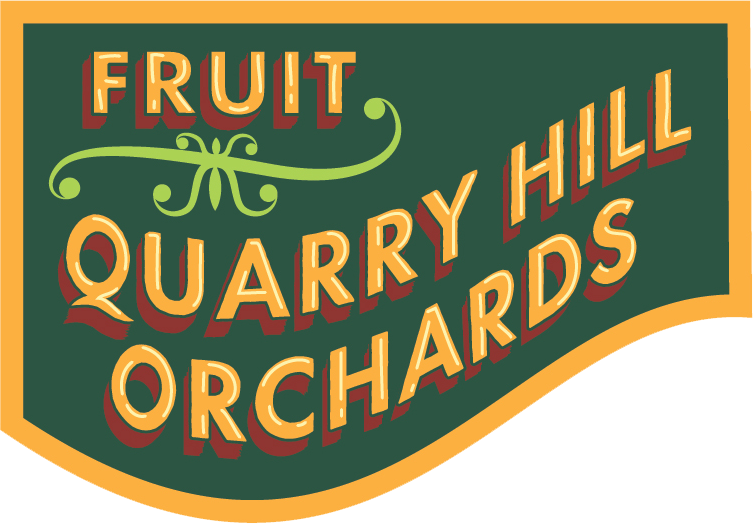

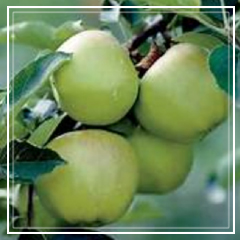 Lodi
Lodi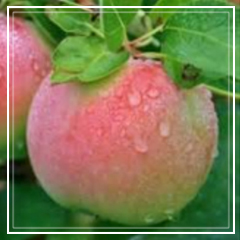 Zestar
Zestar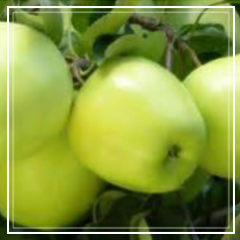 BLONDEE
BLONDEE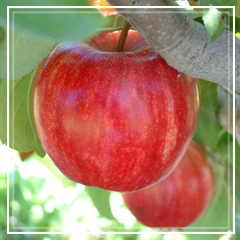 GALA
GALA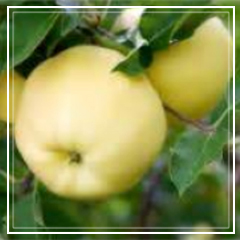 GINGER GOLD
GINGER GOLD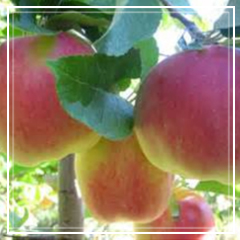 Ambrosia
Ambrosia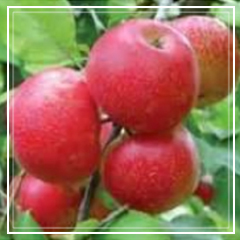 Honeycrisp
Honeycrisp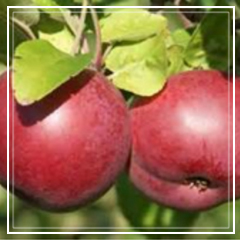 McIntosh
McIntosh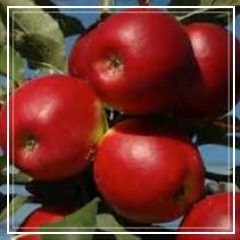 Crimson Crisp
Crimson Crisp Jonathan
Jonathan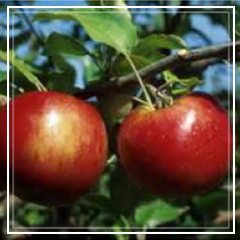 Cortland
Cortland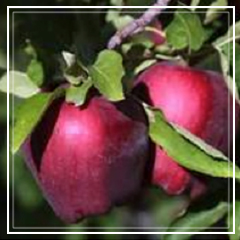 Red Delicious
Red Delicious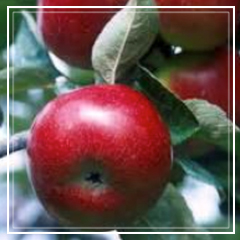 Empire
Empire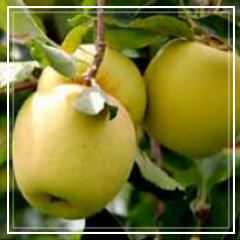 Golden Delicious
Golden Delicious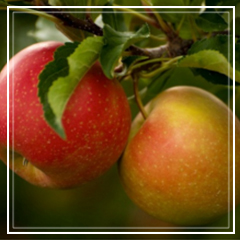 Jonagold
Jonagold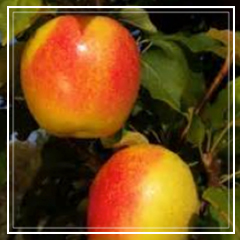 Suncrisp
Suncrisp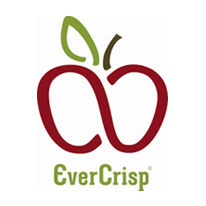 Evercrisp
Evercrisp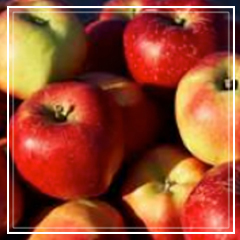 Melrose
Melrose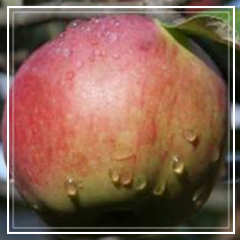 Northern Spy
Northern Spy Enterprise
Enterprise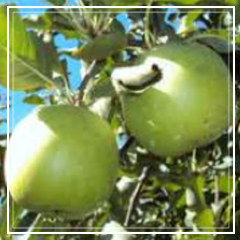 Mutsu – A.K.A Crispin
Mutsu – A.K.A Crispin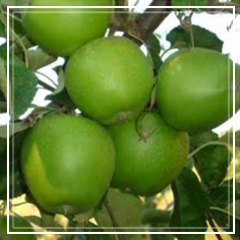 Granny Smith
Granny Smith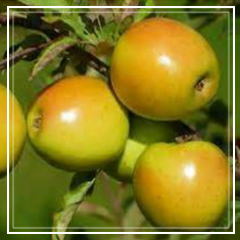 Goldrush
Goldrush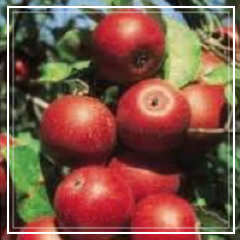 Winesap
Winesap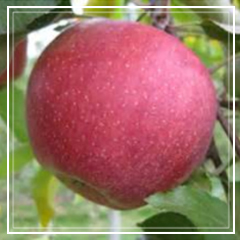 Cameo
Cameo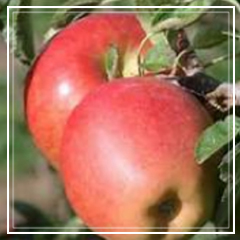 Braeburn
Braeburn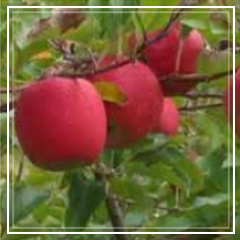 Pink Lady
Pink Lady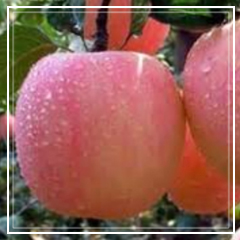 Fuji
Fuji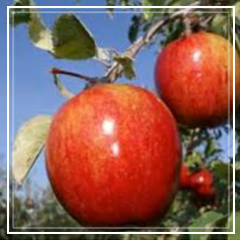 KiKu
KiKu